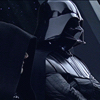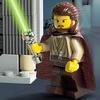| View previous topic :: View next topic |
| Author |
Message |
shootingwomprats
Vice Admiral


Joined: 11 Sep 2013
Posts: 3273
Location: Online
|
 Posted: Tue Dec 06, 2016 9:39 pm Post subject: Random Systems Posted: Tue Dec 06, 2016 9:39 pm Post subject: Random Systems |
 |
|
I have been kicking around the idea of making a random planet generator using the system provided in Planets of the Galaxy 1-4 and Galaxy Guide 8: Scouts. But while going through the information I felt as though something was missing. There were no rules in those books for detailing out the system. Number of planets, asteroid fields, gas giants, basic composition, number of moons if any, etc.
It seems I remember seeing simple rules for generating this information but I cannot seem to find it. Does this sound familiar? Does anyone know what book it appears in?
Perhaps its wishful thinking on my part. If it doesn't exist then I/we need to work out some mechanics.
_________________
Don Diestler
Host, Shooting Womp Rats
The D6 Podcast
http://d6holocron.com/shootingwomprats
@swd6podcast, Twitter |
|
| Back to top |
|
 |
Whill
Dark Lord of the Jedi (Owner/Admin)

Joined: 14 Apr 2008
Posts: 10540
Location: Columbus, Ohio, USA, Earth, The Solar System, The Milky Way Galaxy
|
|
| Back to top |
|
 |
shootingwomprats
Vice Admiral


Joined: 11 Sep 2013
Posts: 3273
Location: Online
|
 Posted: Wed Dec 07, 2016 4:43 pm Post subject: Posted: Wed Dec 07, 2016 4:43 pm Post subject: |
 |
|
Yup I am familiar with that generator, but again, I am looking for the actual rule mechanics I thought I saw in one of the books for generating the entire system, not just the planet. Though, thank you for posting that link. Its still a very good random generator.
_________________
Don Diestler
Host, Shooting Womp Rats
The D6 Podcast
http://d6holocron.com/shootingwomprats
@swd6podcast, Twitter |
|
| Back to top |
|
 |
Error
Captain


Joined: 01 May 2005
Posts: 680
Location: Any blackberry patch.
|
 Posted: Fri Dec 09, 2016 9:52 pm Post subject: Posted: Fri Dec 09, 2016 9:52 pm Post subject: |
 |
|
This is the one I use most and is the best I have found after a lot of searching. It's as thorough as they get, unfortunately, though it more often than not does exactly what I need it to do!
I'm not familiar with any tables in the books for anything other than planets, but that doesn't mean you can't create your own pretty quickly. Say 1D other planets beyond the one inhabited, 5 out of 6 chance of at least one Jovian planet in system (these huge planets actually shelter worlds in the habitable zone indirectly by ejecting extrasolar bodies, and are likely to be found in inhabited systems), a 50% chance of an asteroid belt somewhere (you can roll another 1D to determine its thickness in tens of thousands of kilometers), you could roll 2D to see how many large comets come through or are in orbit just like planets, and then you just need a table where you can take 4D and roll them, and that's how you'd characterize your X extra planets. All you need is for the numbers from 4 to 24 to have simple, small descriptors next to them like "dead star", "ice ball", "gas giant with 10+ moons", "large asteroid in the lagrange point of a gas giant (you could roll for which one)", "scorched ball", "plutoid with eccentric orbit", "former weapons testing site", or whatever you can come up with. You could even do 5D and write numbers 5 through 30. That's only 26 anyway. Of course you are going to have to repeat a few because of their frequency in the galaxy..."scorched ball", "plutoid with eccentric orbit" and "gas giant with 10+ moons" come to mind.
_________________
The only words of explanation you need for any concept in the entire Star Wars universe are the words Science Fiction and Space Opera. |
|
| Back to top |
|
 |
|



